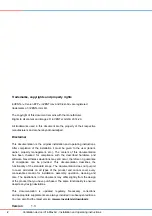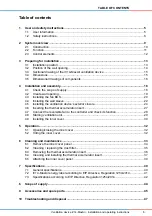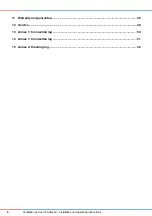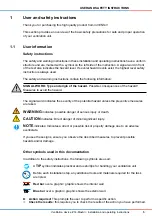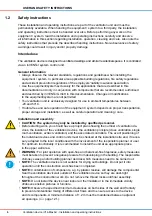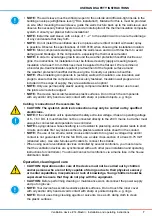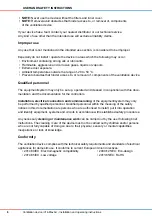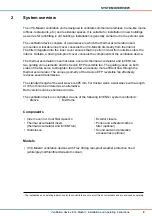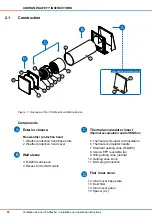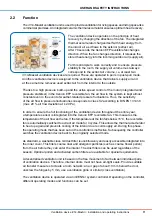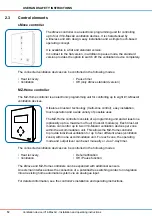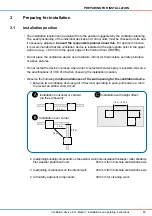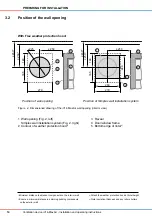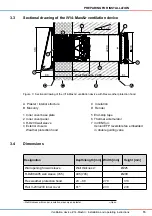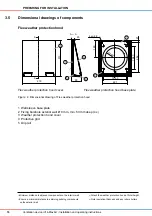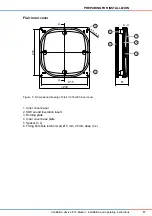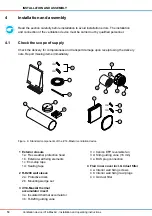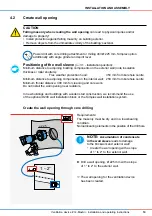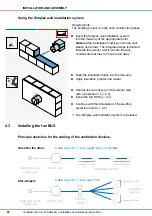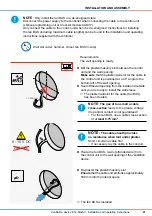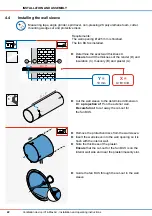
7
USER AND SAFETY INSTRUCTIONS
Ventilation device iV14-MaxAir
•
Installation and operating instructions
• NOTE:
The wall sleeve must be diffusion-open to the outside and diffusion-tight inside in the
building envelope (airtightness level) ("RAL installation"). Material for this is must be provided
on site. After mounting the wall sleeve, guide the wall structure back up to the wall sleeve and
observe the necessary barrier layers to avoid an interruption of the thermal insulation composite
system. Consult your planner before installation!
• NOTE:
Install the wall sleeve with a slope of 1 - 2° to the exterior wall to ensure the drainage
of any condensate that may form.
• NOTE:
Do not install the ventilation device in places where direct contact with water spray
is possible. Observe the specifications of VDE 0100 when choosing the installation location.
• NOTE:
Store components standing outside the wall sleeve and do not throw them to avoid
damage and breakage of the components, especially the thermal accumulator.
• NOTE:
In order to avoid algae growth around the weather protection hood/flat duct/reveal
grille, the instructions for installation must be followed exactly (apply all sealing tapes!).
Insulation of at least 10 mm thickness must be applied to the flat duct. We recommend
a biocidal pre-treatment/water-repellent pre-treatment of the façade surface around
the weather protection hood/flat duct/reveal grille. Consult your planner about this.
• NOTE:
When installing components in (exterior) walls with insulation, use insulation wall
plugs to ensure that the components are securely fastened. Insulation wall plugs are not
included in the scope of supply, they are available as an option!
• NOTE:
Only use permanently elastic sealing compound suitable for outdoor use to seal
the joints at all external edges!
• NOTE:
The device has scratch-sensitive plastic surfaces. Do not touch the components
with oily and/or dirty hands. Avoid contact with sharp or pointed objects, e.g. rings.
Cabling / connection of the reversible fan
• CAUTION:
The system's electrical connections may only be carried out by qualified
electricians.
• NOTE:
If the ventilation unit is operated with safety extra-low voltage, it has an operating voltage
of 6 - 16 V DC. It must therefore not be connected directly to the 230 V mains, but rather must
always be connected and operated via a controller.
• NOTE:
Laying cables whose sheathing is not resistant to plastering under plaster leads to short
circuits and cable fire! Lay cables without a plaster-resistant cable sheath in the conduit.
• NOTE:
The use of too small a cable cross-section leads to too great a voltage drop and/or
contact is not guaranteed! For the fan BUS, use a cable cross-section of at least 0.75 mm²
(stranded wire). Use wire ferrules with collars to connect the strands.
• When using several ventilation devices controlled by several controllers, you must ensure
that the ventilation devices are synchronised with each other (see installation and operating
instructions for controllers). You should connect all controllers via a mains fuse in the house
distribution board.
Operation, cleaning and care
• CAUTION: Operation and/or care of the device must not be carried out by children
and/or persons who are not fully capable of doing so due to their physical, sensory
or mental capabilities, inexperience or lack of knowledge. Young children should be
supervised to ensure that they do not play with the equipment.
• CAUTION:
Before performing cleaning or maintenance work, disconnect the power supply
and put on gloves.
• NOTE:
Your device has scratch-sensitive plastic surfaces. Do not touch the inner cover
with oily and/or dirty hands. Avoid contact with sharp or pointed objects, e.g. rings.
• NOTE:
Do not use strong cleaning agents or solvents. Use a soft, damp cloth to clean
the plastic surfaces.


